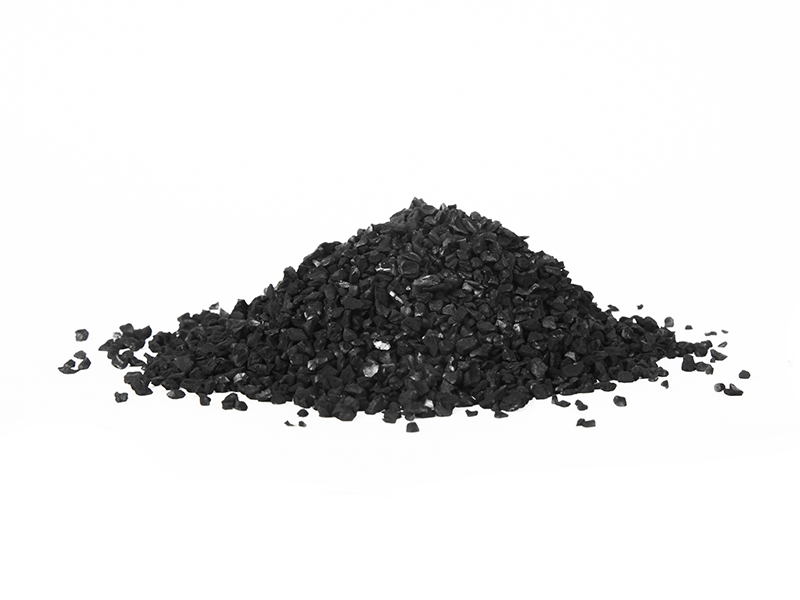Coconut shell activated carbon
Coconut shell activated carbon is made of imported coconut shell carbonized material through high-efficiency activation and refining, with extremely strong adsorption performance and super physical and chemical indexes! The appearance of coconut shell activated carbon is amorphous broken carbon, non-toxic and tasteless, with large specific surface area, strong adsorption capacity, fast adsorption speed and low impurity content. It is widely used in high-purity gas, liquid-phase adsorption, desulfurization, thorough removal of home, office and hotel, Formaldehyde and other toxic and harmful gases in public places and cars can remove smell and poison. Thoroughly eliminate the toxic and harmful gases such as formaldehyde in the home, office, hotel, public place and car, eliminate the smell and poison
Coconut shell activated carbon is a kind of porous carbonaceous material, which has a highly developed pore structure and is an excellent adsorbent. The adsorption area of each gram of activated carbon is more than eight tennis fields. Its adsorption is achieved by physical and chemical adsorption forces. Besides carbon elements, its components also contain a small amount of hydrogen, nitrogen, oxygen and ash The structure is formed by the accumulation of six rings of carbon Due to the irregular arrangement of the six ring carbon, the microporous volume and high surface area of the activated carbon are characterized.
Coconut shell activated carbon can be made of many kinds of carbonaceous materials, including wood, sawdust, coal, coke, peat, lignin, core, hard shell, sucrose pulp, bone, lignite, petroleum residue, etc. Among them, coal and coconut shell have become the most commonly used raw materials for the production of activated carbon. The production of activated carbon is basically divided into two processes. The first process includes dehydration and carbonization, heating the raw materials, drying at 170-600 ℃, and carbonizing about 80% of the original organic matter. The second process is to activate the carbonized products, which is completed by the reaction of activators such as water vapor and carbon. In the endothermic reaction, a mixture of CO and H2 is mainly produced, which is used to burn and heat the carbonized products to a proper temperature (800-1000 ℃), so as to burn all the decomposable materials, thus producing a developed microporous structure and a large specific surface area, so it is very strong Adsorption capacity.
The pores of coconut shell activated carbon can be divided into three types according to the pore size Large hole: radius 1000 - 1000000 a Transition hole: radius 20 - 1000 a. Micropore: radius - 20 a.
Activated carbon made from different materials has different pore sizes. The activated carbon made from coconut shell has the smallest pore radius. Generally, wooden activated carbon has the largest pore radius, they are used to absorb larger molecules, and almost exclusively used in the liquid phase. The first type of granular activated carbon used in urban water treatment is made of wood, which is called charcoal. The pore size of coal based activated carbon is between them.
In coal based activated carbon, lignite activated carbon has more transition pores and larger average pore diameter than anthracite activated carbon, so it can effectively remove macromolecular organics in water. Generally, the surface area of activated carbon used in water treatment is not necessarily too large, but it should have more transition pores and larger average pore diameter. Some liquid phase activated carbons sold on the Japanese market have the following characteristics: specific surface area of 850-1000m2 / g, pore volume of 0.88-1.5ml/g, average pore radius of 40-50a.
Brief introduction of activated carbon function:
Coconut shell active carbon has the function of high efficiency air purification. Active carbon can create a comfortable and clean environment. Active carbon is more care for human health. Active carbon is an invisible air filter. Active carbon is a combination of physical adsorption and chemical decomposition. It can decompose harmful gases such as formaldehyde, ammonia, benzene, cigarettes, lampblack and various peculiar smells in the air, especially carcinogenic aromatics Active carbon is a kind of commonly used adsorbent, catalyst or catalyst carrier, which is easy to fully contact with harmful gases in the air. Active carbon uses its own pore adsorption to suck harmful gas molecules into the pore and blow out fresh and clean air. So active carbon is indispensable for family partners.
Application of activated carbon
Coconut shell activated carbon is widely used in all aspects of industrial and agricultural production, such as alkali free deodorization (refined mercaptan), ethylene desalted water (refined filler), catalyst carrier (palladium, platinum, rhodium, etc.), water purification and sewage treatment in the petrochemical industry; water quality treatment and protection in the power industry; chemical catalyst and carrier, gas purification, solvent recovery and oil in the chemical industry Decolorization and purification of, etc.; beverage, liquor, monosodium glutamate mother liquor and food refining and decolorization of food industry; gold extraction and tail liquor recovery of gold industry; sewage treatment, waste gas and harmful gas treatment and gas purification of environmental protection industry; cigarette filter tip, wood floor moisture-proof, odor absorption, automobile gasoline evaporation pollution control of related industries, preparation of various impregnant solutions, etc 。
According to the application fields, it can be divided into the following categories:
1. Coconut shell is used for water purification. The product specification is complete. Coconut charcoal is the best kind of charcoal for drinking water purification, chlorine removal, algae removal, oxygen absorption and catalytic carrier. Water purifier, filter filler and other water purification equipment first.
2. Gas purification / oil gas deodorization / catalytic carrier. It is used for the adsorption and recovery of high purity gas, home and solvent (benzene, toluene, sulfur, carbon disulfide, butane, ketone, etc.).
Technical parameters:
Analysis item | Data | Analysis item | Data |
Particle size | 0.4-3mm | Bulk specific gravity (filling) | 0.35-0.55 g/cm3 |
Iodine value | 800-1100mg/g | Strength | ≥90% |
methylene blue adsorption | 120-150mg/g | Total pore volume | 0.8-1cm3/g |
Phenol adsorption value | ≥450mg/g | Ash | ≤8% |
Decolorization rate of methylene blue | ≥11ml | moisture | ≤5% |
Specific surface area | 900-1300m2/g |




